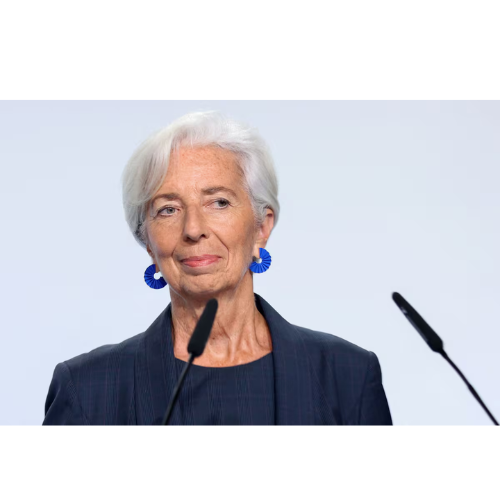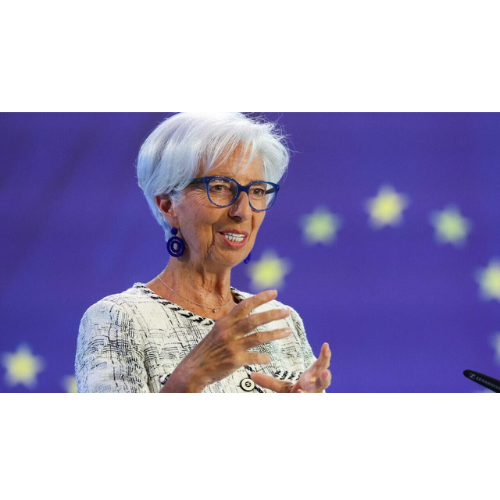The End of Disinflation: Lagarde’s Statement Signals a New Era for Europe’s Monetary Policy
Christine Lagarde, President of the European Central Bank (ECB), declared that “the disinflationary process has ended.” This statement, delivered with striking clarity, marks a pivotal shift in the ECB’s monetary stance and sets the tone for what could be a turbulent period ahead for investors, policymakers, and businesses across Europe and beyond.
Lagarde’s words are a signal that the era of falling inflation is over, and with it, the possibility of further interest rate cuts in the near term.
From Easing to Holding: The ECB’s New Posture
The ECB has spent the last two years battling post-pandemic inflation with aggressive rate hikes. As consumer prices began to cool in early 2025, many analysts expected the central bank to pivot toward rate cuts. Lagarde’s latest remarks, however, suggest that the ECB is now entering a holding pattern, where rates will remain elevated for longer than previously anticipated.
This shift has immediate consequences:

- Bond markets are already reacting, with yields on European sovereign debt rising sharply.
- Equities, particularly rate-sensitive sectors like real estate and consumer discretionary, are under pressure.
- The euro has strengthened against major currencies, reflecting expectations of tighter monetary conditions.
What Does “End of Disinflation” Really Mean?
Disinflation refers to a slowdown in the rate of inflation—not deflation, but a deceleration. Lagarde’ s statement implies that inflation has bottomed out and is no longer trending downward. In other words, the ECB believes that prices have stabilized at a higher level and that further declines are unlikely without risking economic instability.
This is a critical distinction. It means the ECB is no longer focused on bringing inflation down—it’s focused on keeping it from rising again. That requires vigilance, and in Lagarde’s view, keeping interest rates high is the best tool to do so.
Lagarde’s Message to Markets: Don’t Expect Cuts Anytime Soon
Lagarde’s tone was deliberate and firm. She emphasized that the ECB’s priority remains price stability and that premature easing could reignite inflationary pressures. This is a direct message to markets: don’t expect rate cuts in 2025.
In fact, the ECB may even consider additional tightening if inflation shows signs of resurgence. While that’s not the base case, it’s a possibility that investors must now factor into their models.
Implications for Banks and Credit Markets
European banks, which had begun preparing for a lower-rate environment, now face a different reality. Elevated rates mean:
- Higher net interest margins, which could boost profitability in the short term.
- Tighter credit conditions, as borrowing costs remain high for consumers and businesses.
- Increased risk of defaults, especially among highly leveraged firms and households.
Credit markets will likely see a recalibration of risk, with spreads widening and appetite for lower-grade debt diminishing. This could slow investment and dampen growth, particularly in southern European economies that are more sensitive to financing conditions.
Global Spillover: Why the World Is Watching
Lagarde’s statement has global ramifications. The ECB is one of the world’s most influential central banks, and its decisions shape capital flows, currency markets, and investor sentiment worldwide.
Here’s what to expect globally:
The Federal Reserve and Bank of England may feel pressure to maintain their own hawkish stances, especially if inflation remains sticky.
Emerging markets could face capital outflows as investors seek safer returns in Europe.
Commodity prices, particularly energy and food, may fluctuate as currency dynamics shift.

A Period of Monetary Stagnation
With the disinflationary process declared over, the ECB is likely to enter a phase of monetary stagnation—neither hiking nor cutting, but holding rates steady while monitoring inflation closely. This phase could last well into 2026, depending on how economic indicators evolve.
During this time, expect:
- Muted economic growth, as high rates weigh on consumption and investment.
- Volatile markets, as investors adjust to the new reality.
- Heightened political pressure, especially from governments facing fiscal constraints and social unrest.
